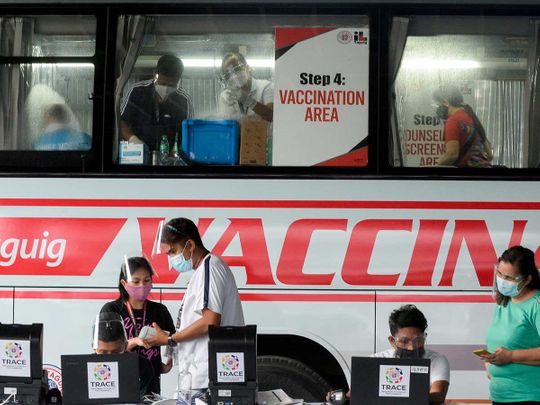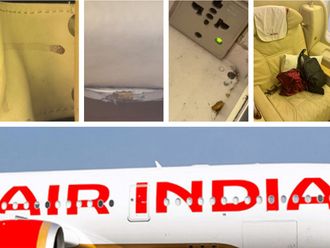
Highlights
- Health official says the percentage of severe and critical COVID-19 cases in hospitals “increasing”.
- Booster uptake remains low.
- Probe sought into expired COVID vaccines.
Manila: Unvaccinated or partially vaccinated people form the majority of most severe and critical COVID-19 cases in hospital facilities in the country, according to a hospital operator group.
Dr. Rene de Grano, head of the 600-member Private Hospitals Association of the Philippines, Inc. (PHAPI), told a public briefing Thursday (August 25) that those who face the most severe cases tend to belong to the group.
“We noticed that those admitted who are immuno-compromised (and) with pre-existing diseases who are unvaccinated, or not fully vaccinated, those are the ones who progress to severe and critical (levels),” de Grano said in the televised briefing.
PHAPI groups about 600 members out of more than 1,000 licensed private hospitals in the country.
The Department of Health (DOH) officer-in-charge Maria Rosario Vergeire confirmed that the percentage of severe and critical COVID-19 cases in hospitals is “increasing” but is still within the threshold.
On Monday (August 22), the health department reported 811 or 9.7 per cent of the total COVID-19 admissions in Philippines hospitals are severe and critical cases.
Expired COVID shots
There's been a concern about millions of unused COVID vaccines expiring.
On July 28, former Presidential Adviser for Entrepreneurship Joey Concepcion, said round 3.6 million doses of Moderna coronavirus shots procured by the country’s private sector have expired on July 27 while 623,000 AstraZeneca doses were expired on Sunday, July 31.
92.59 %
Percentage of target population already vaccinatedThis is equivalent to 4.2 million vaccines, worth around Php5.1 billion ($91 million), he said.
On August 3, 2022, a Philippine Senator also sought an investigation into agencies that let Php13 billion ($232 million) worth of coronavirus vaccines expire.
It’s not immediately clear whether the Php13-billion worth of COVID vaccines the senator wanted to probe include expired shots bought by the private sector.
Coping
De Grano said, however, intensive care units (ICUs) of private hospitals in the country “can still cope with the (number) of COVID-19 patients.”
In the past four weeks, DOH data showed that severe and critical infections comprised more than 9 percent of hospital admissions.
“’Many among the admissions are mild cases that are incidental COVID. They are discharged in a few days,” de Grano told the briefing Thursday.
72,310,149
number of Philippine residents vaccinated against COVID-19, including 78.01 per cent of 8,721,357 senior citizens.He noted that most of the COVID-19 cases that reach the critical or severe stage are the elderly with no vaccination.
As of August 22, about 72,310,149 or 92.59 per cent of the country’s target population (78,100,578) have been vaccinated against COVID-19, including 78.01 percent of 8,721,357 senior citizens.
Meanwhile, 17,419,141 individuals have received booster shots out of the fully-vaccinated population.
17.42 m
Residents who received booster shots out of the 72.3m vaccinated populationThe DOH, through the “PinasLakas” drive, continues to bring COVID-19 vaccines and booster doses closer to the people via village or town health centres. Data experts project that cases and hospitalisations would rise next month (October) if the booster shot uptake remains low.
Alert Level 1
Alert levels were unchanged as officials said COVID cases are manageable and health care utilisation remains “normal”.
Vergeire told local media that if cases and hospital admissions increase, the alert level will be escalated to Level 2 in the National Capital Region (NCR, Metro Manila).
Metro Manila will remain under the lowest COVID-19 risk classification until the end of August, the health agency stated on Saturday (August 22).
In a statement, the DOH said the capital region is among the areas which will retain the Alert Level 1 status from Aug. 16 to 31.
Six other places will be de-escalated to Alert Level 1 for the same period:
- Occidental Mindoro
- Camarines Sur
- Poro, Cebu
- Talalora, Western Samar
- Pualas, Lanao del Sur
- Binidayan, Lanao del Sur
Mask-wearing, isolation
The DOH said Alert Level 1 can be maintained by the continued wearing of mask, isolating when sick, doubling up protection through vaccination and boosters, and ensuring good airflow.








